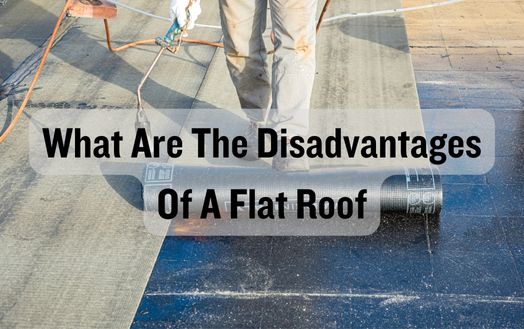I know flat roofs are appealing as a homeowner. It’s sleek, modern, and expandable. However, this roofing type’s drawbacks must be considered. The limited insulation options may be a drawback, but there are many others. There are several factors to consider, including maintenance issues, leaks, and a shorter lifespan than other roofing materials.
In this discussion, we’ll discuss what are the disadvantages of a flat roof, highlighting potential issues and offering advice for those considering this roofing option.
Limited Insulation Options
The limited insulation options for flat roofs can be difficult to work with. Flat-roof insulation is essential for comfort and energy efficiency. Flat roofs have fewer insulation options than sloped roofs, which can be a drawback.
Flat roofs have traditionally been insulated with BUR, or modified bitumen. These options provide some insulation, but not as much as sloped roof options. This limitation can increase energy costs and lower building thermal comfort.
Flat roofs have few insulation options due to the lack of ceiling space. Flat roofs lack cavity space for insulation, unlike sloped roofs. Insulation installation without compromising headroom or design aesthetics is difficult.
Thermal bridging is another drawback of flat roof insulation options. A gap in the insulation layer allows heat to transfer between the building’s interior and exterior, causing thermal bridging. Energy loss, condensation, and insulation reductions can result.
Flat-roof insulation innovation is key to solving these problems. The industry must develop flat-roof-specific methods and materials. This includes investigating spray foam, rigid foam, and green roof systems for better insulation and energy efficiency.
Increased Risk Of Leaks
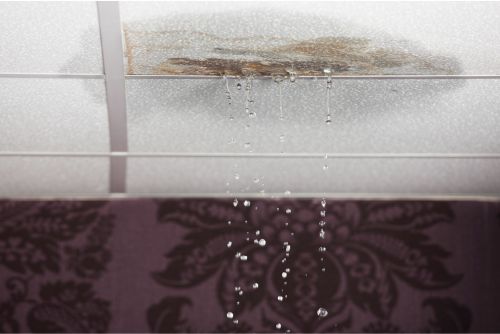
Flat roofs increase leak risk, which worries building owners and occupants. Four reasons why flat roofs are disadvantageous:
- Poor drainage: Flat roofs don’t have the same slope as pitched roofs, which means that water can accumulate and pool on the surface. Without proper drainage systems in place, this standing water can seep through cracks or gaps in the roofing material, leading to leaks.
- Structural instability: The lack of pitch on a flat roof means that it’s more susceptible to damage from heavy rainfall or snow accumulation. The weight of the water or snow can put additional stress on the roofing system, causing it to weaken over time and potentially develop leaks.
- Aging materials: Flat roofs are typically made of materials that have a shorter lifespan compared to those used for pitched roofs. Over time, these materials can deteriorate and become more prone to leaks. Additionally, the constant exposure to the elements, such as UV rays and temperature fluctuations, can accelerate the aging process of the roof, further increasing the risk of leaks.
- Maintenance challenges: Flat roofs require regular inspection and maintenance to prevent leaks. However, accessing and inspecting a flat roof can be more challenging compared to a pitched roof. This can make it difficult to identify and address potential issues before they turn into major leaks.
New roofing materials and technologies are being developed to reduce flat roof leaks. These improvements aim to improve flat roof durability, waterproofing, and performance. Building owners can prevent leaks and prolong the life of their flat roof by keeping up with these innovations and maintaining it.
Maintenance Challenges
Flat roof maintenance is complicated and requires regular inspection and proactive measures. Flat roofing requires special handling to avoid costly repairs and water damage. Due to their design, flat roofs leak more. Flat roofs naturally shed less water than sloped roofs. To resolve issues quickly, a comprehensive maintenance plan is necessary.
Regular inspections help identify roof leak issues. Maintenance professionals can identify leak-prone areas by closely monitoring the roof. This proactive approach prevents water damage, which can damage a building’s structure and cost money to repair. Maintaining a flat roof can also extend its lifespan and reduce the need for replacement.
Debris and ponding water are other flat roof maintenance issues. Leaf, branch, and dirt can clog roof drainage and cause water to pool. Standing water accelerates roof membrane deterioration and leaks. Flat roofs need regular cleaning and debris removal to prevent water damage.
Higher Installation Costs
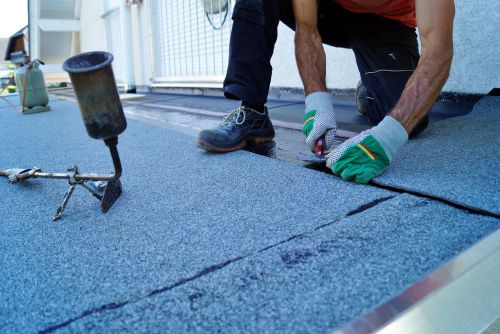
Flat roof installation costs more than other roofing options. Four reasons flat roof installation costs more:
- Structural modifications: Unlike sloped roofs, flat roofs require additional structural modifications during installation. This can include reinforcing the existing roof structure to ensure it can support the weight of the flat roof materials. These modifications add to the overall installation costs.
- Drainage system: Flat roofs require an effective drainage system to prevent water accumulation. Installing a proper drainage system involves additional labor and materials, increasing the installation costs. Innovative solutions, such as smart gutter systems that use sensors to optimize water flow, can further raise the costs but offer long-term benefits.
- Waterproofing: Flat roofs are more prone to leaks and water damage compared to sloped roofs. To ensure proper waterproofing, multiple layers of specialized materials, such as membranes and sealants, need to be applied during installation. These materials and the extra labor involved in their application contribute to higher installation costs.
- Energy efficiency: While not directly related to installation costs, flat roofs often require additional insulation to improve energy efficiency. This can involve the installation of innovative insulation materials, such as reflective coatings or green roofs, which help regulate temperature and reduce energy consumption. While these innovations provide long-term cost savings, they can initially increase the installation costs.
It’s important to weigh the pros and cons of a flat roof and extensions, such as increased urban space utilization and aesthetic appeal, against its higher installation costs. Innovation and cost-effective solutions can reduce flat roof installation costs and maximize their long-term benefits.
Limited Aesthetic Options
One drawback of flat roofs is their limited aesthetic options. Flat roofs and extensions are cost-effective and easy to maintain, but their lack of design variety can be a drawback for those who value uniqueness in their buildings.
Flat roofs’ limited aesthetic options can reduce a building’s appeal. Flat roofs are usually made of asphalt or rubber membranes, unlike sloped roofs, which have many design options. This can make a structure look monotonous and uninspiring, especially for those who want to stand out.
Flat roofs’ limited aesthetic options can also lower property value. In today’s competitive real estate market, attractive buildings attract more buyers and tenants. A flat roof with few design options may not have as much curb appeal as other roof styles. This may affect property resale or rental value.
However, roofing technology has offered some solutions to flat roofs’ limited aesthetic options. Green roofs, which have vegetation on the roof, can make a building stand out and be environmentally friendly. Flat roofs can also be turned into rooftop gardens or terraces, improving the building’s appearance and functionality.
Lack Of Slope For Water Drainage
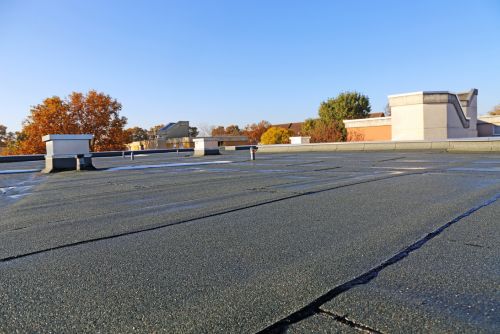
Flat roofs’ lack of slope for water drainage and limited aesthetic options may be drawbacks. This can be difficult in areas with heavy rain or snowfall. Flat roofs have four major drawbacks due to their lack of water drainage slope:
- Pooling of water: Without a slope to facilitate proper water drainage, flat roofs often suffer from water pooling. This can lead to water seeping into the roof’s structure, causing leaks and damage over time.
- Increased weight load: When water accumulates on a flat roof, it adds significant weight to the structure. This can put extra stress on the roof, potentially leading to structural issues or even collapse if the weight load becomes too much to bear.
- Reduced lifespan: The lack of slope for water drainage can accelerate the deterioration of a flat roof. Constant exposure to standing water can cause the roofing materials to degrade more quickly, shortening the lifespan of the roof and necessitating costly repairs or replacements.
- Limited insulation options: Proper insulation is crucial for energy efficiency and maintaining a comfortable indoor environment. However, the lack of slope on a flat roof can limit the insulation options available, making it more challenging to achieve optimal thermal performance.
Innovations in roof design and technology have addressed the drawbacks of flat roofs. Tapered insulation and advanced drainage systems improve flat-roof water drainage. However, knowing what are the disadvantages of a flat roof must be carefully considered when choosing a roofing system, especially in rainy areas.
Potential For Ponding Water
Ponding water on a flat roof poses what risks?
Ponding water is a drawback of flat roofs. The roof’s low areas collect water, forming pools or ponds. Flat roofs are sleek and modern, but water drainage can be difficult.
Water on a flat roof can cause many problems. First, water weight can stress the roof structure and cause damage. This can weaken the roof and cause leaks or collapse. Ponding water also breeds algae, mold, and other microorganisms. These can damage the roof and harm building occupants.
Ponding water can also reduce the effectiveness of roof waterproofing membranes and coatings. Constant water exposure can deteriorate these protective layers, reducing their lifespan and effectiveness. More frequent maintenance and repairs can increase flat roof costs over time.
Innovative solutions have emerged to address ponding water. Built-in slopes and drainage systems on roofs reduce ponding. Flat-roof waterproofing is being improved with new materials and technologies to reduce water accumulation. To maintain flat roof performance, architects, contractors, and building owners must stay abreast of these developments.
Susceptibility To Damage From Heavy Snow Or Ice
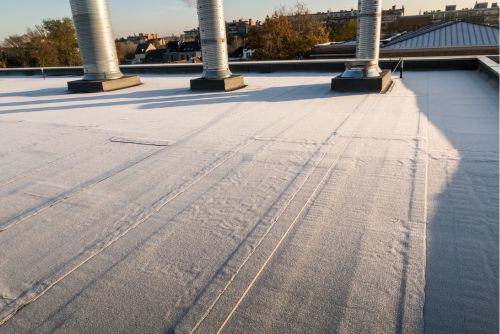
Heavy snow and ice have damaged my flat roofs. Flat roofs have pros and cons, such as being vulnerable to snow and ice damage.
There are four issues with this:
- Weight overload: Heavy snow can accumulate on a flat roof, causing excessive weight that the structure may not be designed to bear. This can lead to structural damage, compromising the integrity of the entire building.
- Formation of ice dams: In colder climates, melted snow can refreeze at the edges of a flat roof, forming ice dams. These dams block the flow of water off the roof, resulting in water pooling and potential leaks. The repeated freeze-thaw cycle can also cause damage to the roof surface.
- Increased risk of leaks: The weight of heavy snow or ice on a flat roof can cause it to sag or deform, creating gaps or openings where water can seep in. Over time, this can lead to leaks and water damage to the interior of the building.
- Roof collapse: In extreme cases, the accumulated weight of heavy snow and ice can cause a flat roof to collapse entirely. This poses a significant safety risk to the occupants of the building.
Innovative solutions are being developed for these issues. To prevent water pooling, some flat roof designs have slopes or drainage systems. Advanced materials and coatings can also strengthen the roof’s snow and ice resistance. Regular inspections and maintenance help identify and resolve issues before they escalate.
Flat roofs have benefits, but heavy snow and ice can damage them. Innovative solutions and proper maintenance can mitigate these challenges, ensuring flat roofs’ longevity and durability in all weather.
Difficulty In Finding Reliable Contractors For Repairs
Flat-roof repair contractors can be hard to find. With flat roofs becoming more popular in modern architecture, it’s important to have reliable roofing contractors who can repair them quickly. The problem is the lack of trustworthy professionals.
Flat roof repairs require expertise due to their unique design and construction. Unfortunately, not all roofing contractors can repair flat roofs. This shortage of reliable contractors makes it hard to find flat roof repair experts.
Flat roofs’ complexity contributes to this issue. Flat roofs require different repair methods than sloped roofs. The lack of slope makes leaks and water pooling harder to spot. This requires skilled flat roof repair contractors.
Modern flat roofs’ innovative materials complicate matters further. PVC and TPO require special repair methods. Not all roofing contractors know these materials or have the right tools and equipment, reducing the number of reliable professionals.
Selecting a flat roof repair contractor requires thorough research and vetting to overcome this challenge. Look for flat roof repair contractors with experience and certifications. To find trustworthy contractors, consult trusted sources or industry experts.
Shorter Lifespan Compared To Other Roofing Materials
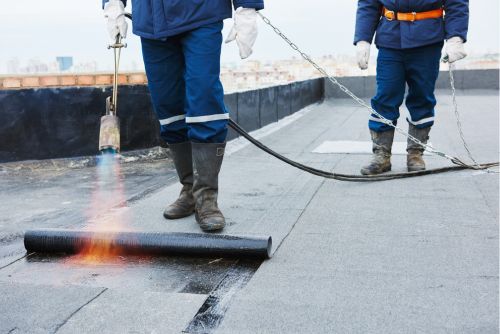
Flat roofs have a shorter lifespan than other roofing materials. Flat roofs offer extra usable space and easy maintenance, but they last less than other roofing options. Flat roofs have a shorter lifespan for four reasons:
- Inadequate drainage: Flat roofs lack the natural slope that allows water to easily flow off, making drainage a significant challenge. Without proper drainage systems in place, water can accumulate, leading to leaks, water damage, and ultimately, a shorter lifespan for the roof.
- Increased susceptibility to damage: Unlike sloped roofs that allow debris, leaves, and snow to slide off easily, flat roofs are more prone to collecting these materials. The accumulation of debris can cause structural issues, increase the risk of leaks, and accelerate the wear and tear, thus reducing the lifespan of the roof.
- Exposure to the elements: Flat roofs are more exposed to the elements, including harsh weather conditions such as heavy rain, snow, and extreme temperatures. This constant exposure puts additional stress on the roof, causing it to deteriorate faster over time.
- Limited material options: Flat roofs typically require specific materials that can withstand the unique demands of a flat surface. However, the available options for flat roofs are often limited compared to sloped roofs, which can result in using materials that may not offer the same durability or longevity.
Despite their benefits, flat roofs have a shorter lifespan than other roofing materials. Innovations in roofing technology and materials aim to solve these problems and extend flat roof lifespans. However, you must weigh the pros and cons before choosing the best roofing option for your building.
Final Thoughts
In conclusion, there are several disadvantages to having a flat roof. These include:
- Limited insulation options
- Increased risk of leaks
- Maintenance challenges
- Higher installation costs
- Limited aesthetic options
Furthermore, flat roofs are also susceptible to other issues such as:
- Potential for ponding water
- Susceptibility to damage from heavy snow or ice
Additionally, finding reliable contractors for repairs can be difficult, and flat roofs generally have a shorter lifespan compared to other roofing materials. It’s important to consider what are the disadvantages of a flat roof when deciding on the type of roof for your home or building.
Frequently Asked Questions
What Are Some Alternative Roofing Materials That Offer Better Insulation Options Than A Flat Roof?
Well, when it comes to alternative roofing materials that offer better insulation options than a flat roof, there are a few options to consider.
One popular choice is a green roof, which involves a layer of vegetation that helps to insulate the building.
Another option is a metal roof, which is known for its durability and energy efficiency. Lastly, a sloped roof with proper insulation can also provide better insulation options compared to a flat roof.
How Can Homeowners Minimize The Risk Of Leaks In A Flat Roof?
To minimize the risk of leaks in a flat roof, homeowners can take several proactive measures. First, regular inspections are essential to identify any potential issues early on. Secondly, ensuring proper drainage and installing a high-quality waterproof membrane can significantly reduce the chances of leaks. Additionally, regular maintenance, such as clearing debris and repairing any damaged areas promptly, is crucial.
Are There Any Effective Maintenance Strategies To Overcome The Challenges Associated With Flat Roofs?
Effective flat-roof maintenance strategies exist. Regular inspections and cleanings can spot and fix issues before they escalate.
A waterproof coating or membrane can further prevent leaks. Homeowners can prolong the life of flat roofs by being proactive and preventing damage. Staying ahead and maintaining it is key.
What Factors Contribute To The Higher Installation Costs Of A Flat Roof Compared To Other Roofing Materials?
Flat roof installation costs are higher than other roofing materials for several reasons. First, flat roof design and construction require specialized skills and materials, which can increase costs. Water pooling and drainage on flat roofs require additional precautions to prevent leaks and water damage. Finally, flat roofs lack a slope for water runoff, making maintenance and repairs more laborious and expensive.
Can You Suggest Any Creative Ways To Improve The Aesthetic Appeal Of A Flat Roof Despite Its Limited Options?
I recommend thinking outside the box to make a flat roof look better, despite its limited options. Include rooftop gardens or green spaces to add nature and improve the view. The installation of skylights or solar panels can improve aesthetics and save energy.

